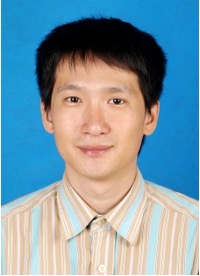Prediction of Tc Upper Limits for Superconducting
Materials Assisted by Machine Learning
Haiyou Huang1*, Yang Liu1,
Yan Zhang1, Hongyuan Feng1, Ning Chen1, Yang
Li2, Kui Jin3, Dezhen Xue4, Yanjing Su1
1 University of Science and
Technology Beijing, Beijing, 100083, China.
2 Department
of Engineering Science and Materials, University of Puerto Rico, Mayaguez,
Puerto Rico 00681-9000, USA.
3 Institute of Physics, Chinese
Academy of Sciences, Beijing, 100190, China.
4 State Key
Laboratory for Mechanical Behavior of Materials, Xi'an Jiaotong University,
Xi'an 710049, China.
ABSTRACT: Finding room temperature
superconductors is a dream of generations. However, in reality, finding a
superconductor is easy, finding a high temperature superconductor is hard. We
are so longing for a convenient way to predict the critical temperature (Tc)
of the superconductors. Owing that there are multiple factors affecting the
superconductivity, we need a holistic perspective to learn the variation law of
Tc. So, the problem of the superconductivity is to find the
pattern in high dimensional space of the factors affecting Tc,
is exactly calling for the help of the machine learning (ML). Usually, when
taking about predict superconductors, we are thinking of two goals: one is to
foresee a material superconduct or not, the other is to predict the Tc
of each chemical composition.
However,
for the ML, those two goals are less feasible. It is hard to know whether a
material superconduct or not before knowing its magnetism, which is also
unpredictable for now. On the other hand, the need of materials scientists is
to predict brand new materials, instead of composition optimization. There is
no need to predict the Tc of each composition, the ML should
be used to predict the Tc maxima (Tcmax)
of various kinds of materials. Hence, owing that our goal is to predict the Tcmax
of new materials, the generalization ability of the ML models is of great significance.
Recently,
encouraging progresses have been made in several ML studies on the Tc
of superconductors. So far, the predictive score on the test data is quite
good. However, their performance of those ML models on predicting unknown
materials is not examined. We noticed that the previous studies, the Tc
and the Tcmax were often confused with each other.
The models were trained with the data of Tc, but prediction
is on the Tcmax. Actually, they are two properties
having very different meanings. Owing that the data distribution of the Tc
is obviously imbalanced, the models trained with the Tc have
poor generalization ability, which makes it not suitable for the prediction of
the Tcmax. When predicting the Tcmax,
the generalization ability of the models is the key to obtain reliable results.
In
this work, we were looking for a strategy to get reliable ML models predicting
the Tcmax of superconducting materials. We
categorized the data in the superconductor database, obtaining ~1000 kinds of
superconducting materials. In each kind of superconducting materials, we choose
the highest Tc as the Tcmax of
this kind of superconducting materials. Meanwhile, we designed a novel feature
set, according to the orbital attributes of the valence electrons. These features
may carry the information about the origin of the superconductivity, which lead
to better interpretability of the ML models. The ML models trained with the
dataset of the Tcmax, and the features derived
from the valence electrons, yield good results, which help us find a new
universal empirical law of Tcmax. It infers a
necessary but insufficient condition of the existence of high Tcmax,
providing an effective guidance for the designation of superior superconductors.
Keywords:
superconductor;critical temperature;machine learning

Haiyou Huang has completed his PhD from Department of Material Physics and Chemistry, School of Material Science and Engineering, University of Science and Technology Beijing in 2007, and Postdoctoral studies from the Hong Kong University of Science and Technology in 2009. Now, he is associate professor and master supervisor of University of Science and Technology Beijing. He has published 3 books and more than 60 papers in reputed journals such as npj computational materials, Applied Physics Letters、APL Materials、Scripta Materials, Materials Design, and has applied 13 Chinese invention patents. In 2017, he won the second prize of Natural Science Award of the Ministry of Education. His main research directions include: MGE database and big-data technology; data driven research and development of advanced materials; shape memory alloy, etc.